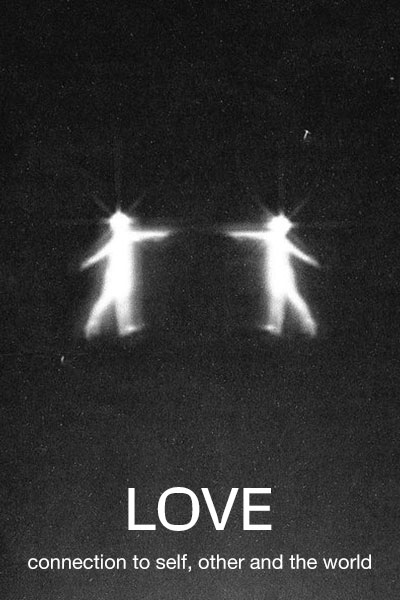Against Nice Things: How the Slow Fashion Movement Gets Misused
‘Slow fashion’ is the newest kid on the block when it comes to eco production terms, but just how effective is it at countering capitalism?
I’ve loved and lost so many swimsuits. A few years ago, I wore a green gingham bikini into an overly-chlorinated hot tub that bleached the bottom half yellow (and made 80 percent of my body break out into an extremely itchy rash). I’ve abandoned a one piece after accepting that I would never grow into a woman who wears cheetah print. Once, my friends and I tried to re-enact the iconic and baffling “prank” in Sleepover where the girls inexplicably put a bra in the freezer, but we used my strapless bikini top, and I never got it back. Many times, I’ve realized a swimsuit I thought fit me in the dressing room actually didn’t in front of my home mirror—or if it had fit me once, it didn’t anymore.
In high school, I bought booty short bottoms because I felt self-conscious about my thighs and then worried that the extra coverage only broadcasted my insecurity. One morning, I woke up and realized that I no longer needed to convince anyone that I had the biggest boobs in the world and that the extra padding actually made me feel sweaty. I’ve projected a general sense of dissatisfaction and ennui onto my pool wear and decided that I would only ever reach self actualization by wearing a simple black scoop neck bikini. I bought it and loved it and wore it into hot springs that stunk it up forever. I soaked it in vinegar but it couldn’t be saved.
Recently, a friend and I were talking about buying well-constructed bikinis that should last us for years and years. I was trying to replace the black scoop bikini and we’d both been getting Instagram ads for a nicer brand. We liked the one that came in a multi-colored diamond pattern and cost 118 USD per set. She said that, of course that’s more expensive than we’re used to, but we should get it—if we buy cheap suits, they’ll end up in the landfills because the material will stretch and damage. It’s true: collectively, we need less stuff. An unthinkable amount of clothing is thrown away. The fast fashion industry is a massive contributor to both climate crises and labor exploitation, and if nobody ever made another article of fabric again, that might actually be fine. And still—I’m not sure I believe that the fancy bikini would help that much. All I could think was that for the many reasons that swimsuits have come in and out of my life—and, for the most part, dresses, sweaters, t-shirts, shorts, hats and scarves, too—it’s rarely because I’ve worn them so hard that they literally came apart at the seams. Spending 80 extra dollars wouldn’t have saved them.
I hear a lot about the virtue in buying garments that are made to last. The thinking goes that if you spend more on a quality item, it will take longer to disintegrate and you’ll buy less frequently. The idea that the material fraying of cheap fabrics drives our desire to shop and our culture of disposability, appears in publications like The Atlantic (“The Power of Buying Less by Buying Better”) and The New York Times (“How to Buy Clothes That Are Built to Last”). It’s an idea reinforced by the fashion bloggers I follow, the Instagram infographics I scroll past, and the conversations I hear in real life. But something about this idea has always sat wrong with me, overemphasizing the role of material deterioration while understating a different problem, which is why we over consume to begin with. When I think about my own shopping, it seems like a relatively small percentage of my purchases are fueled by the need to replace an item that has been worn into the ground. Actually I can only think of a handful of times I’ve worn through anything but high-use staple garments, like shoes, socks, and jeans. I’m still wearing tank tops I got at Forever 21 years ago—and still shopping for cardigans even though the ones I own are undamaged. The vast majority of my clothing doesn’t get enough action to fall apart, at least not in a way that isn’t easily repairable, and not in a way I couldn’t ignore if I wanted to. As recently as the 1980s, people were estimated to own only 20% as many clothing articles as they do today.
Applying the same type of durability-driven purchase logic to all clothing across the board, regardless of whether they’re worn 20 hours a week or 20 hours a year, strikes me as a little absurd—but that doesn’t stop brands from capitalizing on the idea. The Guardian wrote an article promoting $140 swimsuits that “are designed to last longer in a bid to reduce throwaway fashion,” but I keep thinking—how often does a typical person wear a given swimsuit annually? Eight-five percent of US adults are in the pool five times a year or less—are regular off-brand swimsuits literally dissolving in water within hours of try-on? For what it’s worth, I wore a pair of Walmart bikini bottoms for most of my adult life. The clothing company Ivy Oak brands itself as “Timeless Styles, Made to Last” as it sells formal dresses for 650 dollars—even though these are garments that are, by definition, for special occasions and incredibly low-wear.
A lot of the companies on the made-to-last marketing circuit use fibers that are at least partially recycled—but it’s hard to trust a corporation’s eco-friendly messaging. Brands like Reformation advertise their $300 dollar slip dresses by touting green practices and recycled fabrics, but critics argue that, even with reusable materials, the volume of new production is simply too high to be sustainable. You can’t produce new clothing at the scale that Reformation does without contributing massive amounts of pollution and waste to the total tally. It’s hard for an average person to decipher green-washing versus genuine sustainability measures, and when there are large sums of money on the line, I can’t help thinking that there are more reliable ways to channel that passion than hoping that Reformation and similar brands live up to their mission statement. I’m not immune to the draw of scrolling through Ref’s wedding guest attire, but always with a nagging suspicion that I might be better off just borrowing an outfit from a friend’s closet and sending the money to a climate activist group. When I see the high price-tag attached to sustainable purchases, I’m reminded of a criticism comparing airline carbon off-setting programs to Catholic indulgences. In both cases, we learn: ”you can live how you want as long as you have the money to buy off your sins.”
Anyway, most formal dresses, at all price points, will likely only be worn a handful of times. This isn’t necessarily because they fall apart, but because you only need to dress up so many times a year. Also once you’ve worn the same outfit to a few weddings and posted it on Instagram, it stops feeling exciting. When companies label their products as timeless, perhaps what they mean is: it’s possible to find an object that you won’t change your mind on. The problem is, we usually do. I once thought skinny jeans would never not be cool.
The clothing company Ivy Oak brands itself as “Timeless Styles, Made to Last” as it sells formal dresses for 650 dollars—even though these are garments that are, by definition, for special occasions and incredibly low-wear.
On promising garment sustainability.
It’s hard to stop over-consuming tank tops if we’re not honest about what drives us to do it in the first place, and it’s often not that our clothes all need to be replaced lest we stand naked in the street. It’s because we’re bored, because we’re starting a new job, because there’s a costume party coming up, because it’s soothing, because we gained or lost weight, because we were in a particularly good mood or a particularly bad one, because we want to fit in or stand out, because a TikTokker made fun of cropped jackets and it got in our head, because we didn’t predict the ways that our tastes would evolve, and most of all, because buying things is, unfortunately, really, really fun.
I talked to a friend who works in fashion and largely disagrees with my indictment of the $140 swimsuit. Fabric is genuinely getting worse: fibre lengths are shorter, items pill quickly, and people don’t know how to care for what they have. They pointed out that, even though fast fashion has trained me to expect lower prices, clothes really should cost more than they do. If you make a polyester dress while paying workers US minimum wage, it may actually have to cost $600. We went back and forth for a while: they agreed that fabric should be made less, but that when we make it, we should do it ethically and right—which is, of course, fair. I think there’s a lot of value to their approach, and I don’t want to discount that there’s other ways to think about this. I said, it’s not that I think we should all go out and buy lots of cheap dresses: I just think the language around made-to-last clothing allows us to focus on getting the right thing rather than asking ourselves whether we need a newly created thing at all.
I’m a little suspicious of the made-to-last messaging, which seems like an incomplete, but profitable narrative for elevated basics companies to promote: the way to stop buying so much clothing is to buy one more thing! The marketing often suggests a company wants you to find a product that will help you buy less—but it’s tough to reconcile this when their continued existence requires you to buy more. If durability and timelessness were, in practice, actually paired with the other slow fashion principles, if we all addressed and de-programmed the impulse to seek dopamine by pressing the “buy now” button, if we were only searching for clothing when we genuinely had something to replace, I’d feel less conflicted. But as it stands, I keep hearing myself use the rhetoric to legitimize new purchases. In our group chat, my friends and I send each other screenshots of moto boots, cigarette jeans, and linen sheets that we want, but don’t technically need. “Ok, but if it’s really high quality, then you’ll wear it for years,” we tell each other, over and over.
Nominally, the goal is to get to a point where we—with our timeless, well-constructed items—don’t have to buy things as frequently. This should mean that our screenshots decrease over time, but they don’t. Our identity never stabilizes. We keep imagining new versions of ourselves, ones with ankle-length coats and platform loafers, who wear off-the-shoulder dresses on vacation, who look more writerly or professional or adventurous. There’s no piece of clothing in the world crafted mindfully enough to stop this relentless churn of desire. “Get it!” we say, because discouraging a purchase feels vaguely mean. “Think of it as an investment.” Slow fashion messaging hasn’t slowed us down—only given us the language we needed to justify doing what we wanted to do anyway.
It’s because we’re bored, because we’re starting a new job, because there’s a costume party coming up, because it’s soothing, because we gained or lost weight, because we were in a particularly good mood or a particularly bad one...
On why we buy
What’s the alternative? I haven’t cracked the code, but I’m working on learning to label the factors that make me want to buy things and address them for what they are. When Instagram serves me advertisements for clay-colored bramis, I tell it to stop showing me this content because I know it can suck me in. I personally like hard-and-fast boundaries around my habits, like no new purchases for 60 days. I’ve taken to wearing my late grandad’s scarf and knitting cardigans with secondhand yarn and forcing myself to style the items I already have. I swap my clothing and thrift it and bring it back to the thrift store when I’m done. When I find myself scrolling through ASOS, I try to name the feeling for what it is—usually boredom or procrastination—and find another way to deal with it. I borrow my friends’ clothes a lot. This isn’t the way for everyone to live, and there are many circumstances that would make this harder: if I wasn’t straight-sized, if I had sensitivities to certain materials, if I couldn’t get to thrift stores easily. But it’s viable for a lot of people, and I think it’s a worthwhile option to explore: not buying less by buying better, just buying less new stuff by buying less new stuff.
Very little of my clothing lasts, at least not in my posession. Every time I move—which, in recent years, is often—I get rid of at least half of my belongings, either by selling them or giving them away. It’s pretty expensive to transport a ton of stuff long distance, and it also just feels freeing to hold onto things lightly. When I’m wearing from and contributing to a communal pile of clothes, there’s less pressure to be particular or timeless or flawless. I don’t have to find leather made out of algae; I can just sift through the clothing that already exists and treat it as something I pass through rather than something I own for life.
As I approach my thirties, I’m at an age where you’re meant to start investing in a few nice things, or at least that’s how it can feel. Recently, I watched a fashion vlogger talk about buying pieces you can see yourself wearing in ten years, and I found this concept so shocking—it’s incredible to me that anyone finds the future so accessible. There’s so much I don’t know about my life ten years from now: where I’ll live, what I’ll look like, whether I’ll still like rounded collars or golden ochre. I don’t know if I’ll have children, if I’ll work in an office, how my health will evolve, or if I’ll change my mind about everything I’m saying right now. The idea that I can predict whether I’ll like jeans that taper along my calf when I’m on the cusp of 40 feels daunting, if not impossible. If clothing is a way that people externalize who they think they are or wish they were, I don’t know how to plan for a sense of self that is, and will likely always be, in constant flux—and maybe my biggest problem with timelessness is the way that stabilizing an identity can become constricting. A part of me loves the impermanence of clothing—outfits that place you squarely within time rather than beyond it. I love the joy and creativity that comes with reimagining yourself, creating new combinations, trying on a style for a little, passing it to the next wearer when you’re done—and letting go of the notion that you can buy an object that’s inoculated against change.





















